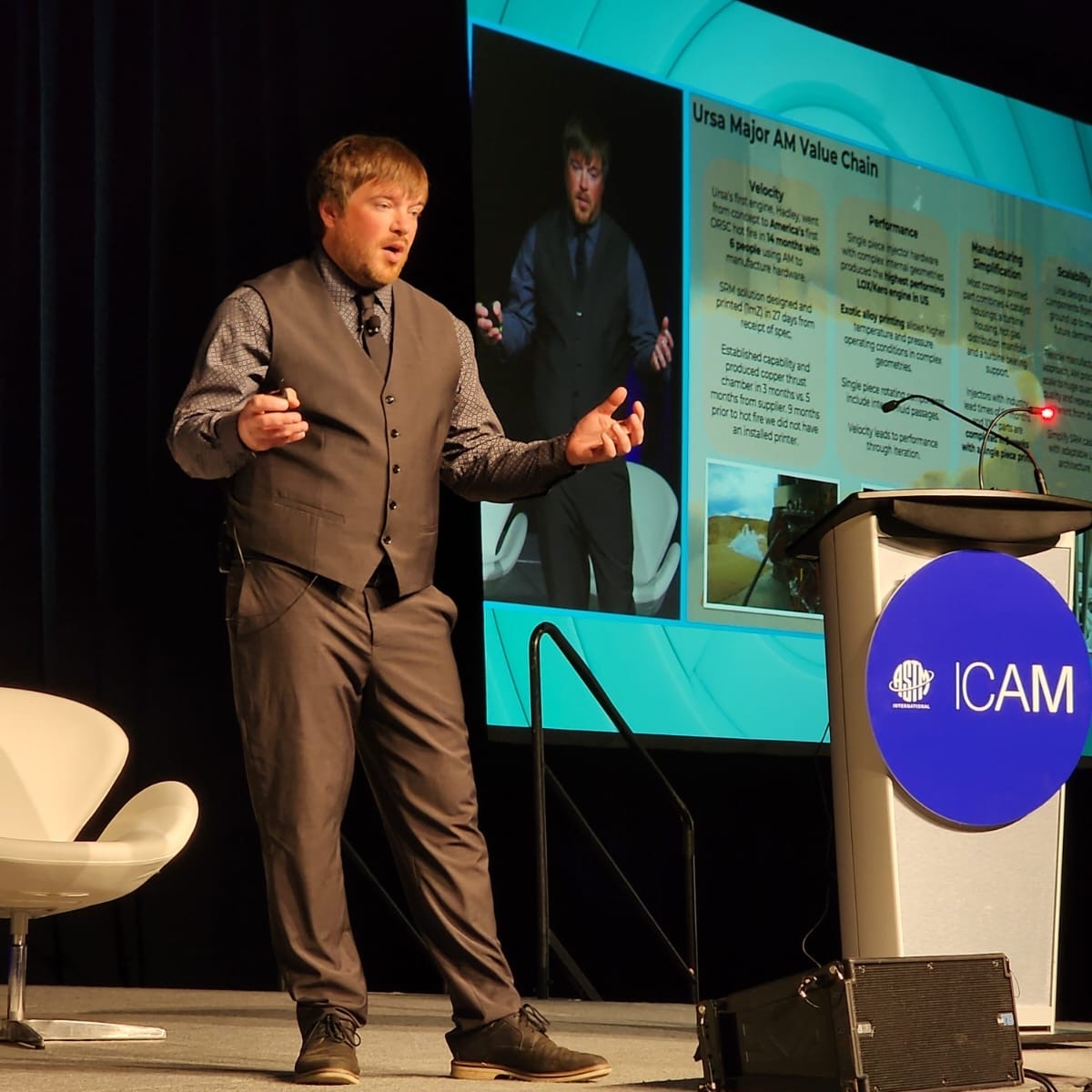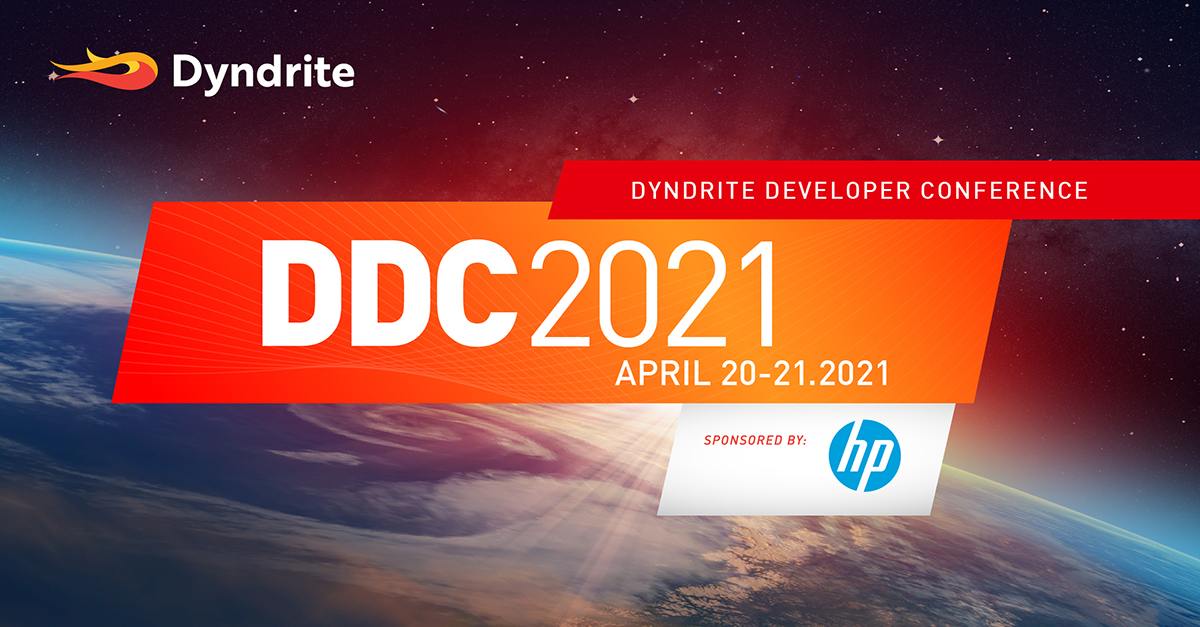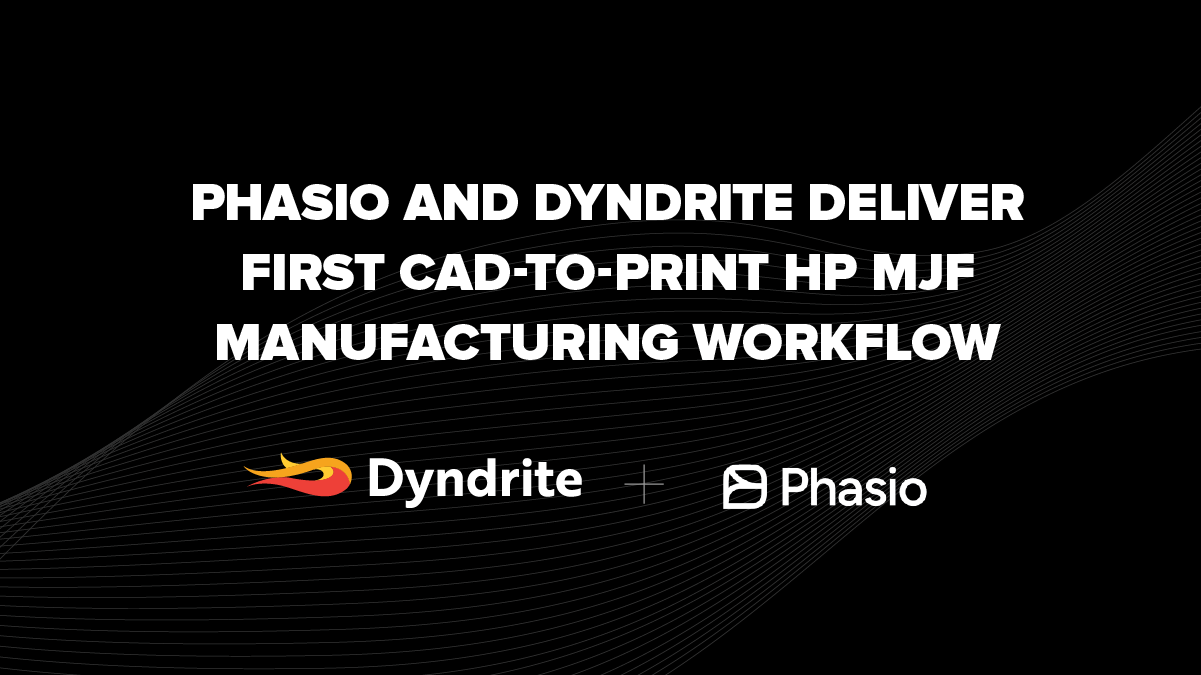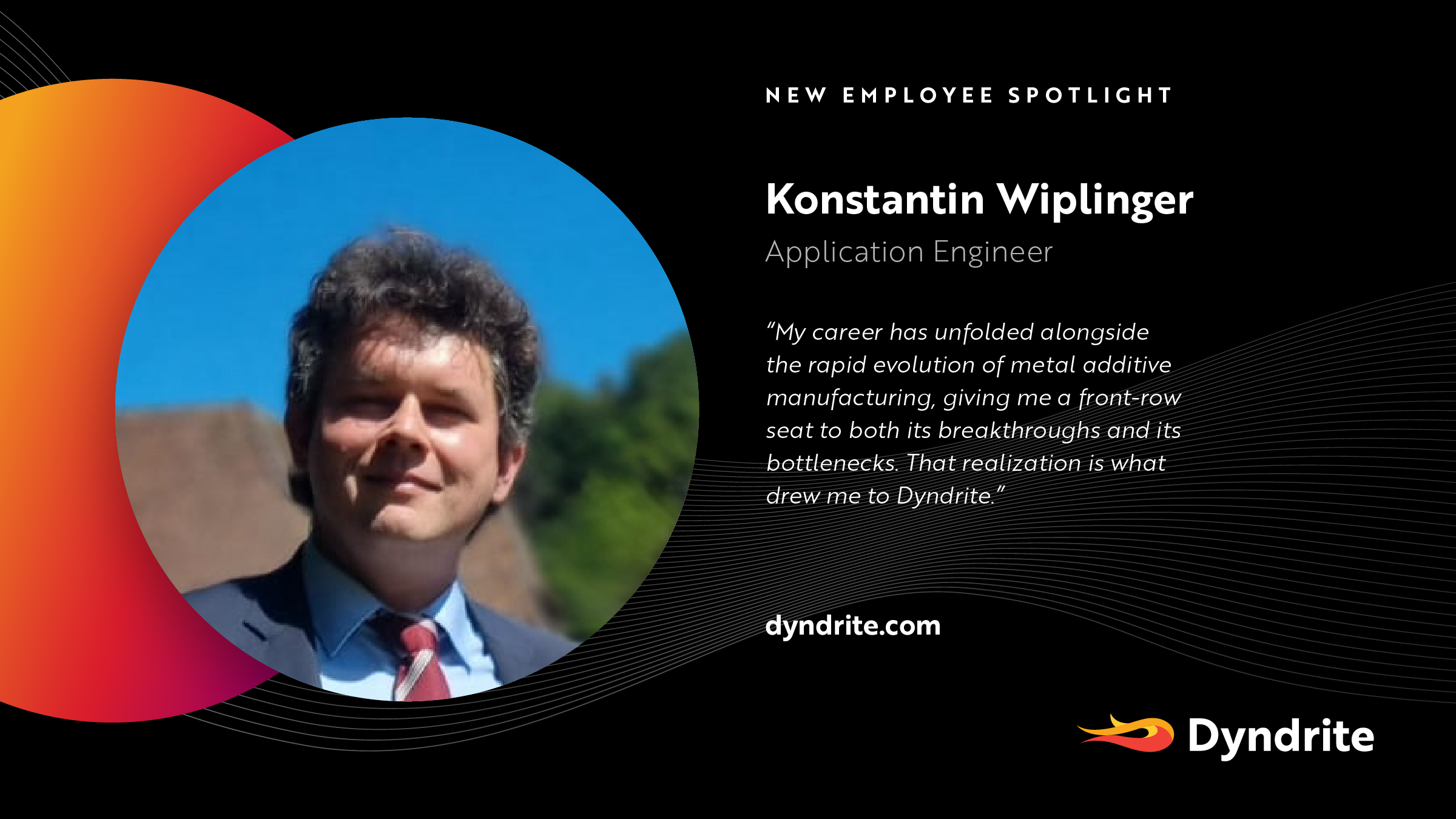Ursa Major’s Vision for Industrialized Additive Manufacturing, and Why It Matters
At ASTM ICAM 2025, Thomas Pomorski, Director of Additive Manufacturing at Ursa Major, delivered one of the most impactful keynote sessions of the conference: To scale AM in a capital efficient manner, we must adopt a new approach centered on software, data, automation, and collaboration.

Yesterday at ASTM ICAM 2025, Thomas Pomorski, Director of Additive Manufacturing at Ursa Major, delivered one of the most impactful keynote sessions of the conference: “Breaking Through the AM Scale Barrier to Propel U.S. Defense and Aerospace.”
The message was clear- the additive manufacturing industry stands at a crossroads. To scale in a capital efficient manner, we must adopt a new approach centered on software, data, automation, and collaboration.
The Historical Bottleneck
Since the inception of additive manufacturing, engineers have faced the same scaling challenge. Despite rapid improvements in machine hardware, sensors, and materials, the workflows remain manual, opaque, and disconnected. Qualification cycles take months, or even years. Each machine behaves differently. Data lives in silos, and every new geometry triggers a fresh round of costly, trial-and-error testing.
As Thomas noted, these limitations have kept AM from achieving more than a few percent of the global manufacturing market. “Capital-effective scaling,” he argued, “is an existential issue for U.S. industry.”
Software: The Missing Engine of Scale
At the heart of Ursa Major’s approach lies a simple insight: a key enabler to scaling AM isn’t just better machines, it’s better software.
Using Dyndrite’s LPBF Pro as a universal slicer, Ursa Major has built a software-defined workflow that links process development, simulation, and qualification into one coherent, physics-based pipeline. Through Dyndrite’s Python API, their engineers can:
- Define and manage process parameters programmatically across machines and materials
- Integrate with AI tools like Claude and ChatGPT for code generation and simulation support
- Feed real-time data from EOS into Palantir systems and quality and validation loops
- Close the loop between machine intelligence (IQ) and final part acceptance
This framework, built on a Dyndrite foundation, represents a paradigm shift from “black-box” manufacturing to transparent, auditable, traceable and reproducible additive production.
A New Approach to Qualification: Software defined Delta Qual
Another groundbreaking concept presented in the Ursa Major, Dyndrite collaboration is the idea of “Software defined Delta Qualification.”Traditional AM qualification methods are static - each new material, geometry, or machine requires requalification from the ground up, wasting months of time and millions in resources. Qualification methodologies built using Dyndrite’s programmable LPBF Pro engine, changes all that.
To learn , “How”, attend the ICAM 25 Talk being held by Ursa Major + Dyndrite at ASTM ICAM 25:
“Novel Delta Qualification Framework for Multi-Platform Additive Manufacturing of Aerospace Hardware”.
This presentation lays out a novel component level delta qualification framework for the aerospace industry encompassing hardware manufactured with LPBF across several OEM platforms. Our approach addresses the critical challenge of qualification, which is interoperability spanning multiple machine platforms, including, Aconity3D, Additive Industries, EOS, NikonSLM Solutions, Renishaw, Trumpf, and Velo3D.
This ICAM talk will take place on Oct. 8th at 9:10AM PDT in Pavilion 3, followed by an extended Q&A in the Dyndrite booth.
Click here for talk description
From LPBF to a Broader AM Ecosystem
Ursa Major’s success in metal additive manufacturing provides a blueprint for the entire industry. The same architecture that powers their laser powder bed fusion (LPBF) operations can now extend to other processes, such as HP Multi Jet Fusion (MJF) - If you’re an MJF user visit Phasio’s Camspec talk on Wed. @ 4pm.
With Dyndrite at the core, manufacturers can unify how they develop, qualify, and scale across multiple AM modalities,
The Economic and Strategic Impact
Pomorski’s keynote made the national significance of this approach unmistakable. By shifting qualification from the right the left from PQ to OQ to IQ companies can:
- Significantly Reduce qualification time and cost
- Cut testing and validation costs by over 80%
- Enable small and mid-sized manufacturers to compete in advanced aerospace and defense production
It’s not just an engineering advancement, it’s a path toward industrial resilience- at a time when the AM industry drastically needs increased productivity and efficiency.
Looking Ahead
What Ursa Major presented yesterday wasn’t just a case study, it’s a turning point. It shows how software-first AM strategies built on Dyndrite can unlock the next phase of industrialization, where qualification is data-driven, production is scalable, and innovation moves at the speed of thought.
Dyndrite and Ursa Major will have an extended Q&A in the Dyndrite booth post talk, as well as an encore presentation in the Dyndrite booth later that day at 2:30pm.
Those interested in getting hands-on with Dyndrite LPBF Pro can register for the Dyndrite workshop on Thursday Oct 9th, 6:45PM Pavilion 9.
To talk with a Dyndrite expert click here.
Find out more on this topic by attending Dyndrite Developer Conference 2021, April 20-21 (virtual event)
 Register for DDC2021. It's free!
Register for DDC2021. It's free!



